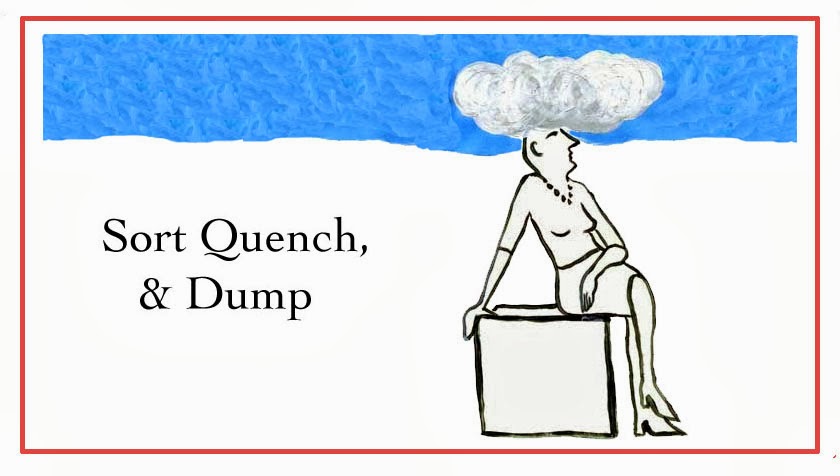
The thing about giving away free books on WORLD BOOK NIGHT is this: anyone in his right mind initially assumes we are religious zealots. And hence to be avoided.
So last night CSB and I went to the Yonkers train station with Meg, bookstore champion, WBN promoter, big reader and dear friend. And as he did so brilliantly last year, CSB stood on the sidewalk and announced in his booming voice that it was WORLD BOOK NIGHT and we were giving away free books - as commuters emerged, rushing, dashing home, tired, cranky and hungry, eager for that chilled martini. Then Meg and I flanked out and approached likely people, and talked as fast as possible (before they could move away) about giving away free books to celebrate and encourage reading & about the merits of our respective books.
 Mine, My Antonia, about an immigrant family moving to Nebraska, being pioneers, homesteading in the plains. Make it quick!!
Mine, My Antonia, about an immigrant family moving to Nebraska, being pioneers, homesteading in the plains. Make it quick!!  Meg’s, The Tender Bar, about a young boy who is raised in his uncle’s bar by the patrons of the bar. Stress the bar! Coming of age in unusual circumstances!!
Meg’s, The Tender Bar, about a young boy who is raised in his uncle’s bar by the patrons of the bar. Stress the bar! Coming of age in unusual circumstances!! Because the train station is a warm place it is a hangout for homeless men, and so there are always 2 policemen patrolling the area, making the homeless men move away. We tried to give books to the policemen, but were told that they can’t accept anything, not even a book that can only be free. But we told them about WBN anyway. One of them (the “bad cop” of the Good/Bad Cop drill?) told us proudly that he hadn’t read a book since high school. He only reads anything on his “grundle” (sic). The other policemen seemed actually interested and said he was going to tell his son about The Tender Bar, but he couldn’t accept a copy, not even for his son. Later they frisked a man, and after that they questioned a red-faced, red-haired homeless man named “Red”. They asked him how long he had been known as “Red” and he said, Since he was born. Then they asked him for some ID, and he gave them a series of plastic cards, but none had his name on them, or any name at all. They told him to go hang out someplace else.
Since we gave away books last year at the Yonkers RR station, the daylighting of the Saw Mill River has been completed, and so instead of the dreary Larkin Parking lot, what you see when you debouch the red brick 1911 station is the river, banked with boulders, and straddled by an arched pedestrian bridge. It is quite lovely.
One of the challenges of WBN is its mission: to give books to “light or non-readers”. How do you identify a light or non-reader? By the Starbucks or Dunkin’ Donuts cup in her hand? By the earbuds affixed to his cochlea? By the clothes, shopping bags, race, color, creed or sexual orientation? Obviously, it is close to impossible. Readers come in all colors and shapes, as do non-readers. However, what often happens is that already-readers hear the words FREE BOOKS and became actually interested. (It works for me every time.) And we are so grateful someone is interested, that we happily hand over a book, only to be told that this person read this book last year and loved it, or, as happened yesterday when I was extolling My Antonia, that this man had a daughter named Willa.
After exhausting the book-receiving possibilities of the Yonkers train station, and with books still un-given in our boxes, we headed to the bar in Hastings. There was a man smoking just outside the door, and Meg told him about The Tender Bar. He wasn’t interested, but suggested she give one to his wife, Doreen, who was inside. At the far end of the bar were two young women drinking micro-brews. I gave them the plot line of The Tender Bar (boy, single mother, raised by uncle & bar patrons, comes out well) and one of the women said, “That’s just like me. That’s my life story.” She pulled open a satchel so I could see the paperback novel inside. We determined that the last copy should go to her friend, who was not raised in a bar.
I would like to tell you that after last year, when CSB had to rein me in, I did not chase anyone down the sidewalk brandishing a free book and imploring them to hear my spiel. Because I really was more restrained this year. I did not tug at anyone’s coat tails and I did not physically remove their earbuds to enable them to listen to my paean to reading.































